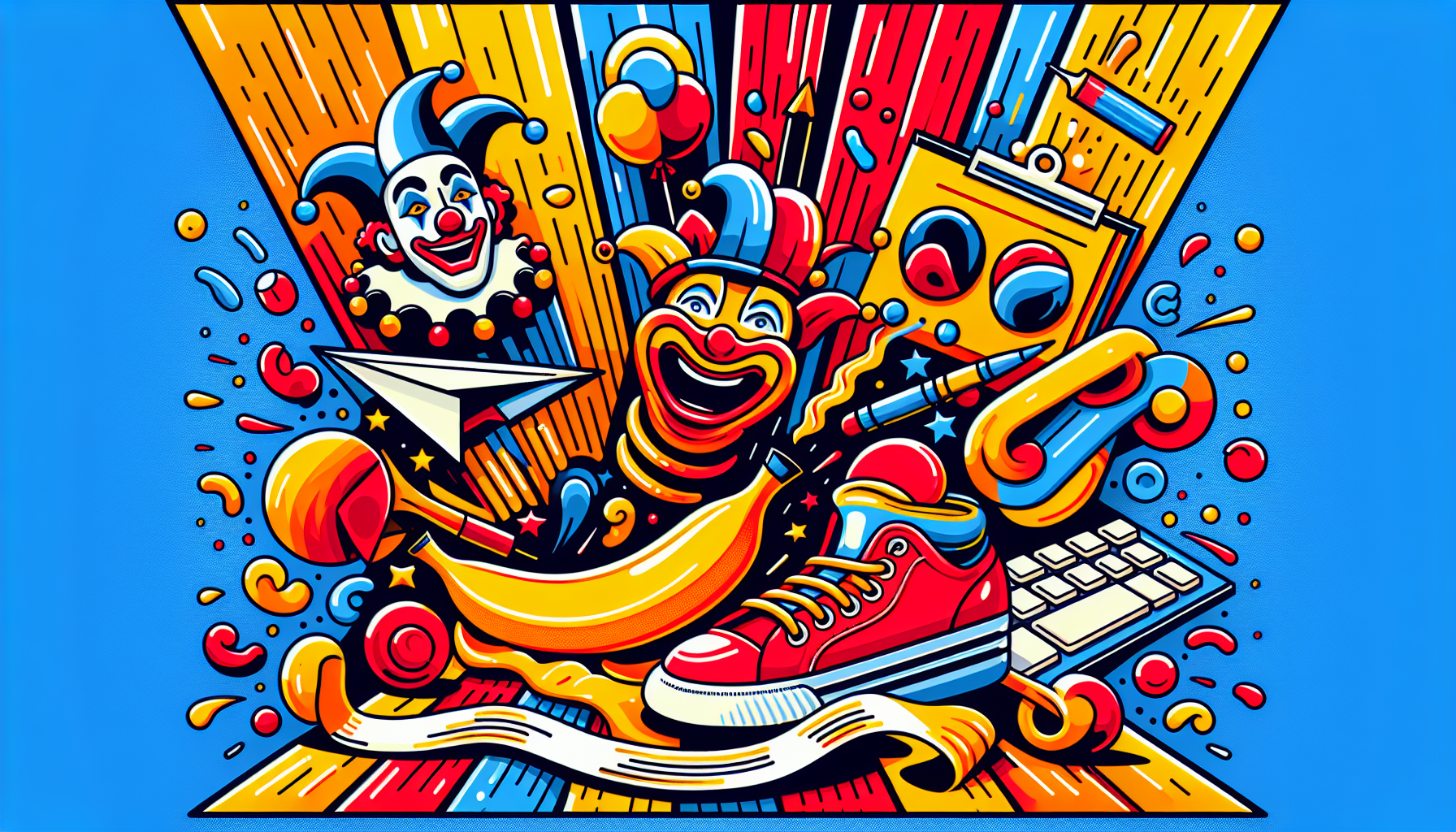
Understanding Comedy Tropes
Comedy tropes are recurring themes or elements that are universally recognized and understood within comedic storytelling. These include situational mishaps, character archetypes, and exaggerated realities that, when skillfully employed, can significantly enhance the humor in screenwriting. Mastering these tropes allows writers to connect with their audience through shared societal and cultural understandings, crafting stories that resonate, entertain, and provoke thought.
Identifying Key Comedy Tropes
The Straight Man and The Wise Guy
One of the most classic constructs in comedy is the pairing of the straight man with the wise guy. The straight man serves as the voice of reason, reacting logically within the illogical world of the comedy, thus amplifying the absurdity of the wise guy’s antics. This dynamic creates a contrast that can be a rich source of humor when exploited correctly.
Misunderstandings and Miscommunications
Often the backbone of sitcoms and romantic comedies, misunderstandings, and miscommunications lead to conflicts that drive the humor. Whether it’s a wrongly delivered message or an eavesdropped conversation taken out of context, these scenarios push characters into hilariously uncomfortable situations, providing comedic relief through their attempts to rectify the confusion.
Exaggeration and Hyperbole
Exaggerating characters’ traits, situations, or reactions can highlight the absurdity of everyday life, creating humor that resonates with audiences by amplifying relatable circumstances to ludicrous levels. Screenwriters should note that the key to successful exaggeration is maintaining a balance that keeps the story relatable while maximizing comedic effect.
Implementing Comedy Tropes Effectively
Understand Your Audience
Knowing the preferences, cultural backgrounds, and sensibilities of your target audience is crucial in determining which tropes will be most effective. Humor can be highly subjective, and what appeals to one demographic might not resonate with another. Tailoring your comedic elements to suit your audience is a fundamental step in engaging and entertaining them.
Maintain Character Integrity
While employing these tropes, it’s essential to remember that characters should remain consistent and true to their established personalities. Tropes should serve to enhance the narrative and character development, rather than detract from it. Characters reduced to caricatures solely for laughs can break immersion and diminish the overall quality of the story.
Combine and Twist Tropes for Originality
While tropes are familiar patterns, presenting them in unique combinations or with unexpected twists can breathe new life into conventional comedic situations. The element of surprise plays a significant role in humor, and reimagining or subverting traditional tropes can create memorable moments that stand out in the minds of your audience.
In mastering comedy tropes, screenwriters equip themselves with the tools necessary to craft compelling, humorous, and engaging stories. By understanding, identifying, and skillfully implementing these elements, writers can elevate their comedic narratives, resonating with audiences through laughter and shared human experiences. The art of comedy writing lies not just in eliciting laughter but in weaving humor into the fabric of stories that speak to the heart of the human condition.






